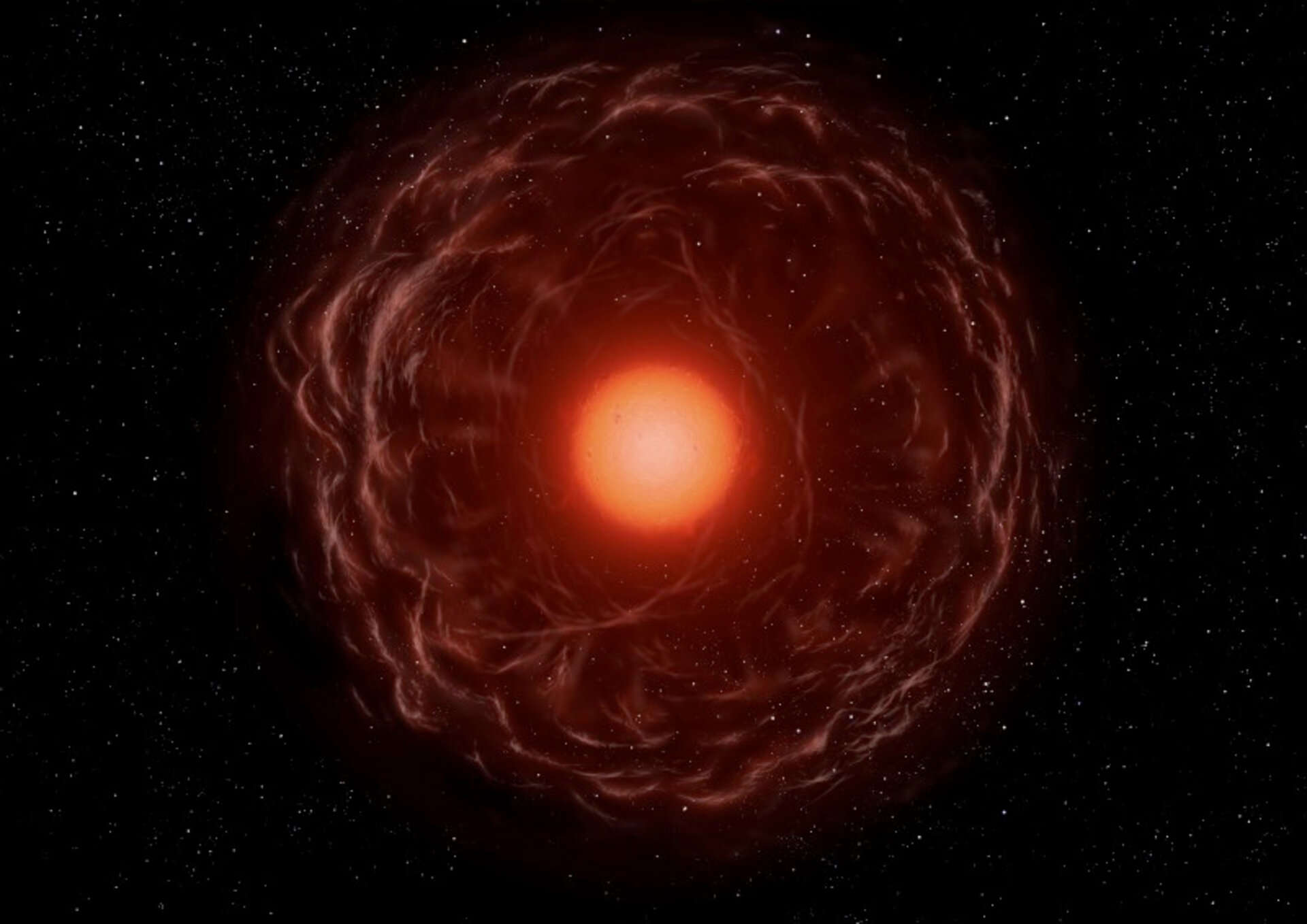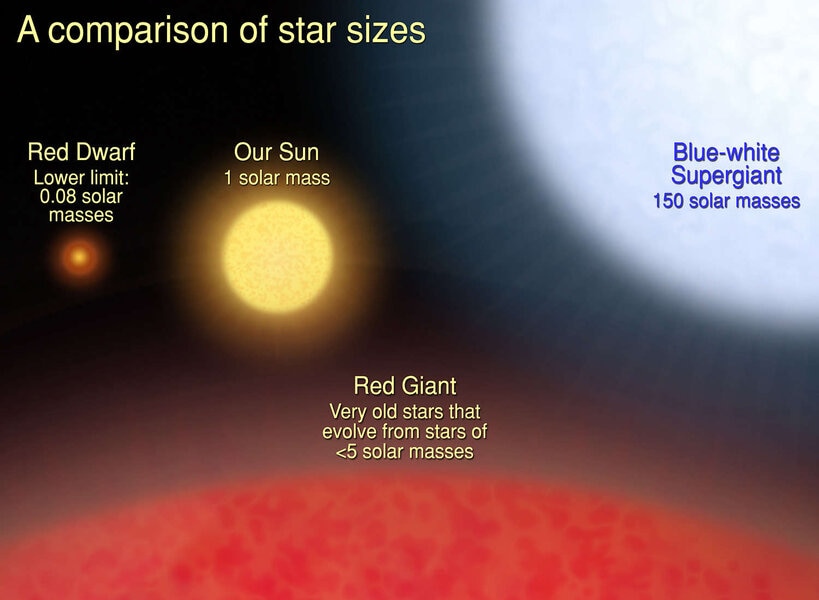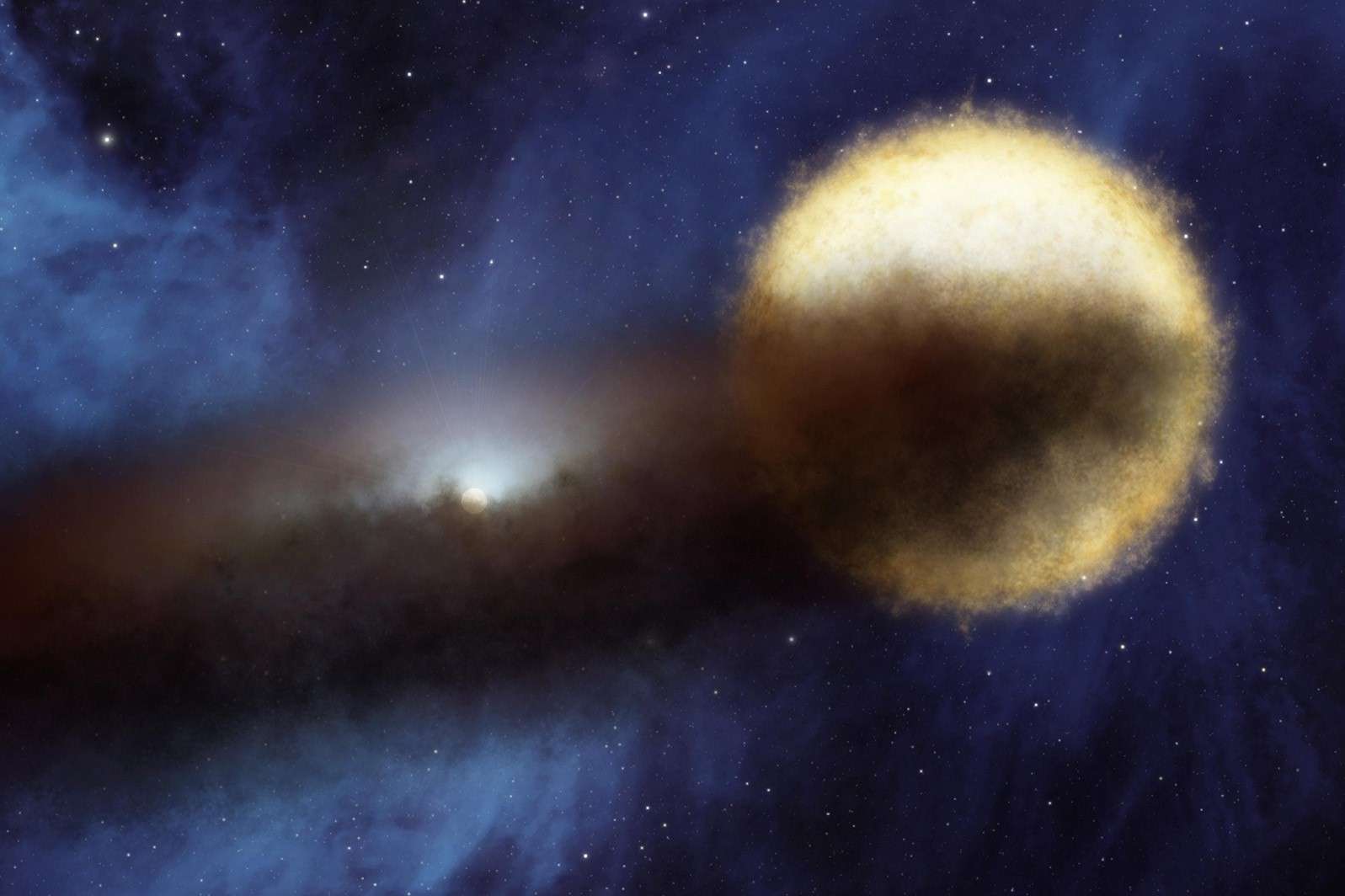First a red giant cooks its planets, then it turns them into mini-stars

A long standing astronomical mystery may finally be solved. It involves dying stars, torched planets, rejuvenating those planets as kinda-sorta stars, and big ol' clouds of dust.
A lot of stars are what we call variable, meaning they change their brightness over time. Some are irregular, in that they just seem to get brighter and dimmer at random times (see Boyajian's Star), while others are regular or periodic variables, which get brighter and/or dimmer on regular cycles.
Almost all the reasons stars do this are understood, at least at some level. Some pulsate, getting physically bigger and smaller over time, which changes their brightness. Others have a hot spot on their surface and when that rotates into view the star gets brighter.
Many red giants are variable. These are stars that started off much like the Sun but have used up all the hydrogen in their cores; fusing hydrogen into helium is what generates the energy a star emits as light. A lot of complicated stuff happens in the core, but the result is the star a) swells up hugely, getting over a hundred times as wide as it was before, 2) increases its luminosity, so it gets a lot brighter, and iii) cools off, so it goes from being blue or white to a deep red. Hence the term red giant.
A lot of these stars pulsate due to the way their upper layers absorb and emit energy from the core below, and while that's complex it's fairly well understood. However, a lot of these stars have a second periodicity on top of the primary one that generally lasts for months to years — much much longer than the primary pulsation period. These are called long secondary periods, and were first seen in red giants back in the 1930s. However, despite a century of observations the cause hasn't been clear.
A bunch of different ideas have been tried, but none seems to explain everything. However, a team of scientists got clever, and may have found the solution, which they have published in a recent paper.
Their solution involves a bunch of different things, but at the root of it is that the red giants aren't alone; they have companions orbiting them. But that's not all. One old idea is that the secondary object is surrounded by a cloud of dust (if that sounds familiar I wrote about a specific and weird example of a similar star recently), and as the star+cloud orbited the red giant it blocked the bigger star from our view, causing it to dim.
But how to prove this?
The team used the data from a project called (appropriately) OGLE, the Optical Gravitational Lensing Experiment, which basically stared at a handful of places in the sky where stars are plentiful to look for rare events called gravitational lenses. That's a very cool topic, and you can read about it here, but the point is that it looked at millions of stars for years, measuring their brightness.
So the team filtered the database for red giant stars that had LSPs, and found 16,000 of them. A lot. They then turned to the Wide-field Infrared Survey Experiment, or WISE, which was a NASA mission that mapped the sky over and over again in infrared light. This part is important because dust clouds are warmed by starlight and glow in infrared. Looking in that part of the spectrum can reveal clues about what's going on.
In the end they wound up with 700 stars they could examine from the OGLE database that were also clearly observed by WISE. And what they found was pretty cool.
In visible light, the brightness of the red giants would dip over some time and then go back up again. But what they found is that in infrared light there was a second dip, exactly in between the big ones seen in visible light.
At this point the picture came into. Dust is opaque to visible light, so once per orbit blocked the red giant, causing the brightness we see to dip. But then half an orbit later the dust cloud would go behind the red giant from our view, so the star blocks the cloud. Clouds are dark in visible light, so no change is seen there. But in infrared the dust cloud is bright, and when it gets blocked the brightness in IR dropped.
Ta-da! Case closed.
Except... where did the dust come from? Well, when a star expands into a red giant it can create a lot of dust in its upper atmosphere. A companion star could then capture this dust into a cloud or disk around it.
Ta-da! Case Closed.
Except... careful examination of the way the red giants' brightness change indicates that the companions tend to be very low mass stars, even down into brown dwarf territory (objects more massive than planets but less than stars). That's a problem, because those kinds of objects are rare orbiting stars like the Sun. The number we see orbiting Sun-like stars is way less than we see orbiting red giants (which, remember used to be Sun-like). So how can this be?
The team has an answer for that as well. That secondary star/brown dwarf used to be a planet! Planets around Sun-like stars are common. When the star swells up as it dies, a lot of star's material can be captured by the planet, making it grow. If it gains enough mass, it can literally turn into a brown dwarf or even a star.
It's a balancing act. If the planet is too low mass it'll get vaporized by the star when it swells up, so it has to start off as big or bigger than Jupiter for this to work. But that's pretty common, so not a problem.
And if you're wondering if this will happen to the Sun, the answer is probably not. Jupiter is too far out, and as the Sun turns into a red giant it'll move even farther away, likely to be lost to interstellar space, doomed to wander the black eternally as opposed to getting cooked and dumped on and turned into a star.
So anyway... ta-da?
Yup. Ta-da.
Or, probably, at least. This does seem to explain LSPs in general, but I bet as more of these are examined some weird ones will pop up. They always do. But the good news is that we now have a starting place for ideas, a jumping-off point that gets us most of the way to an explanation. In science, that's a really good step.
Tip o' the dew shield to AstroBites and AAS Nova, where I first saw this paper mentioned.





























